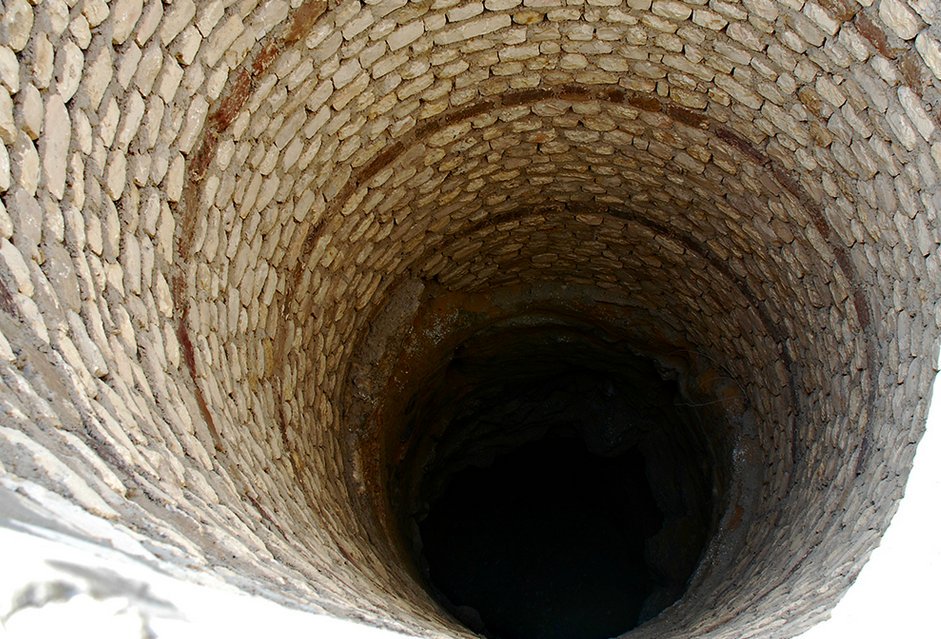Ranikot Fort: Gigantic Great Wall Of Pakistan Shows Greatness Of Indus Valley Civilization
A. Sutherland - AncientPages.com - Ranikot Fort also known as the Great Wall of Sindh is a historical fort near Sann, Jamshoro District, Sindh, Pakistan. Even its remains show the greatness of the Indus valley civilization of the third millennium BC.
The fortification wall runs on three sides of the area, while on the northern side the lofty peaks of the higher hillocks serve as a wall.
Ranikot Fort- located 90 kilometers (56 mi) to the north of Hyderabad - is most probably one of the world's largest forts.
The fort’s eastern gate is known as Sann Gate and the whole structure is really gigantic; it is 35 km in length and connects barren hills. The fortification wall, which has solid semi-circular bastions at several intervals, perfectly follows the natural contours of the hilly landscape of the region.
The fortification wall runs on three sides of the area, while on the northern side the lofty peaks of the higher hillocks serve as a wall.
The northern part of the fort's perimeter is a natural high hilly formation while on the other three sides it is covered by fort walls. Within this main fort, there is a smaller fort known as the "Meeri" which is about 5–6 miles from the entry gate of the main fort and is reported to have served as the palace of the royal family of Mirs.
The original purpose and architects of Ranikot Fort are unknown. However, it is believed that the fort was built during the regimes of the Sassanians, the Scythians, the Parthians, or the Bactrian Greeks.
Archaeologists point to the 17th century as the time of its first construction but Sindh archaeologists now agree that some of the present structures were reconstructed by Talpurs in 1812.
Radiocarbon tests conducted at the Sann Gate confirmed that this gate was probably renovated between the early part of the 18th century and the early part of the 19th century, prior to Britain invading the fort when the Kalhoras, or most likely the Talpur Mirs of Sindh ruled over the area.
The fort is huge, connecting several bleak mountains of the Kirthar hills along contours, and measures 31 kilometers (19 mi) in length. The fort is combined with several bastions in between and three of them are of semi-circular shape.
The whole architecture of the fort is restricted to stone and lime.
The northern part of the fort's perimeter is a natural high hilly formation while on the other three sides it is covered by fort walls. Within this main fort, there is a smaller fort known as the "Meeri" which is about 5–6 miles from the entry gate of the main fort and is reported to have served as the palace of the royal family of Mirs.
The entire fort structure has been built with stone and lime mortar. The fort is built in a zig-zag form, with four entry gates in the shape of a rhomboid.
The southern entry gate has a double doors gate. Within the gates, there are two niches that have floral ornamentation and carved stones.
Two of the gates, facing each other are crossed diagonally by the Sann river; the first gate is on the western side and is skirted by the river water and is difficult to approach.
The southern entry gate has a double doors gate. Within the gates, there are two niches that have floral ornamentation and carved stones. The Sann gate, which is also the entrance to the Meeri, is well preserved and can be climbed to reach the top of the fort from both sides to get a scenic view of the terrain around the fort.
Written by – A. Sutherland - AncientPages.com Senior Staff Writer
Copyright © AncientPages.com All rights reserved. This material may not be published, broadcast, rewritten or redistributed in whole or part without the express written permission of AncientPages.com
Expand for referencesMore From Ancient Pages
-
 Ancient Underwater City Of Heracleion Reveals More Archaeological Treasures
Archaeology | Jul 21, 2021
Ancient Underwater City Of Heracleion Reveals More Archaeological Treasures
Archaeology | Jul 21, 2021 -
 Mysterious Old Ship With No Crew Reaches The Canadian Coast
Featured Stories | Jul 25, 2024
Mysterious Old Ship With No Crew Reaches The Canadian Coast
Featured Stories | Jul 25, 2024 -
 Ancient Mysteries Of Japan – Strange Manuscripts Written In Unknown Language Discovered By Scientist – Part 1
Ancient Mysteries | Aug 31, 2019
Ancient Mysteries Of Japan – Strange Manuscripts Written In Unknown Language Discovered By Scientist – Part 1
Ancient Mysteries | Aug 31, 2019 -
 First Peoples’ Early Migration To Australia – Influenced By Evolving Landscapes
Archaeology | May 6, 2024
First Peoples’ Early Migration To Australia – Influenced By Evolving Landscapes
Archaeology | May 6, 2024 -
 Oral Stories Of Australia’s First Nations Might Be 10,000 Years Old – Evidence Found
Archaeology | Aug 2, 2023
Oral Stories Of Australia’s First Nations Might Be 10,000 Years Old – Evidence Found
Archaeology | Aug 2, 2023 -
 Ancient Mystery Of The Village Where All Residents Vanished Overnight
Ancient Mysteries | Oct 19, 2021
Ancient Mystery Of The Village Where All Residents Vanished Overnight
Ancient Mysteries | Oct 19, 2021 -
 Ancient Hebrew Inscription Reveals Location Of Biblical Mount Sinai
Archaeology | Nov 21, 2019
Ancient Hebrew Inscription Reveals Location Of Biblical Mount Sinai
Archaeology | Nov 21, 2019 -
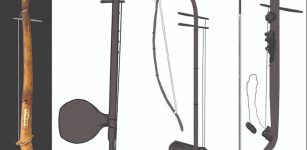 2,000-Year-Old Stringed Instrument Found In Vietnam
Archaeology | Feb 22, 2023
2,000-Year-Old Stringed Instrument Found In Vietnam
Archaeology | Feb 22, 2023 -
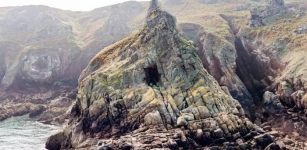 New Clues Why Neanderthals Visited La Cotte de St Brelade In Jersey 250,000 Years Ago
Archaeology | Jun 18, 2023
New Clues Why Neanderthals Visited La Cotte de St Brelade In Jersey 250,000 Years Ago
Archaeology | Jun 18, 2023 -
 200-Year-Old Message In A Bottle Written By Archaeologist Unearthed In France
Archaeology | Sep 30, 2024
200-Year-Old Message In A Bottle Written By Archaeologist Unearthed In France
Archaeology | Sep 30, 2024 -
 Beautiful Legend Of Maneki-neko – The Japanese Good Luck Charm Cat Raising A Paw
Featured Stories | Oct 10, 2021
Beautiful Legend Of Maneki-neko – The Japanese Good Luck Charm Cat Raising A Paw
Featured Stories | Oct 10, 2021 -
 Never-Before-Seen Roman-Era Wall Paintings Discovered In Ashkelon Revealed To The Public For The First Time
Archaeology | Aug 30, 2024
Never-Before-Seen Roman-Era Wall Paintings Discovered In Ashkelon Revealed To The Public For The First Time
Archaeology | Aug 30, 2024 -
 Ancient DNA Sheds Light On How The Caribbean Islands Were Settled
Archaeology | Jun 24, 2020
Ancient DNA Sheds Light On How The Caribbean Islands Were Settled
Archaeology | Jun 24, 2020 -
 Cosimo di Giovanni de’ Medici – Exile Of The Generous, Intelligent Banker Caused Fury In Renaissance Florence
Featured Stories | Apr 7, 2021
Cosimo di Giovanni de’ Medici – Exile Of The Generous, Intelligent Banker Caused Fury In Renaissance Florence
Featured Stories | Apr 7, 2021 -
 ‘Reforms of Shang Yang’ – Location Of Ancient Yueyang – Confirmed
Archaeology | Jan 25, 2016
‘Reforms of Shang Yang’ – Location Of Ancient Yueyang – Confirmed
Archaeology | Jan 25, 2016 -
 4,000-Year-Old Textile Mill Discovered At Beycesultan Mound In Western Turkey
Archaeology | Sep 25, 2020
4,000-Year-Old Textile Mill Discovered At Beycesultan Mound In Western Turkey
Archaeology | Sep 25, 2020 -
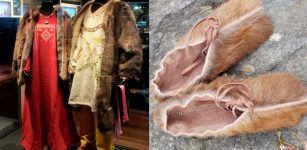 Impressive Textile Reconstruction Shows What Viking Age People Dressed Like
Featured Stories | Sep 26, 2023
Impressive Textile Reconstruction Shows What Viking Age People Dressed Like
Featured Stories | Sep 26, 2023 -
 Rare Ancient Drawings Offer Evidence Moluccan Boats Visited Australia From Indonesia?
Archaeology | May 31, 2023
Rare Ancient Drawings Offer Evidence Moluccan Boats Visited Australia From Indonesia?
Archaeology | May 31, 2023 -
 Cenomani People: Their Pre-Roman Celtic Cemetery Reveals Funerary Customs
Archaeology | Apr 18, 2019
Cenomani People: Their Pre-Roman Celtic Cemetery Reveals Funerary Customs
Archaeology | Apr 18, 2019 -
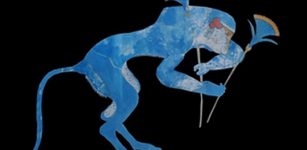 Mystery Of The Minoan Blue Monkeys Depicted In Frescoes
Archaeology | Apr 16, 2020
Mystery Of The Minoan Blue Monkeys Depicted In Frescoes
Archaeology | Apr 16, 2020




